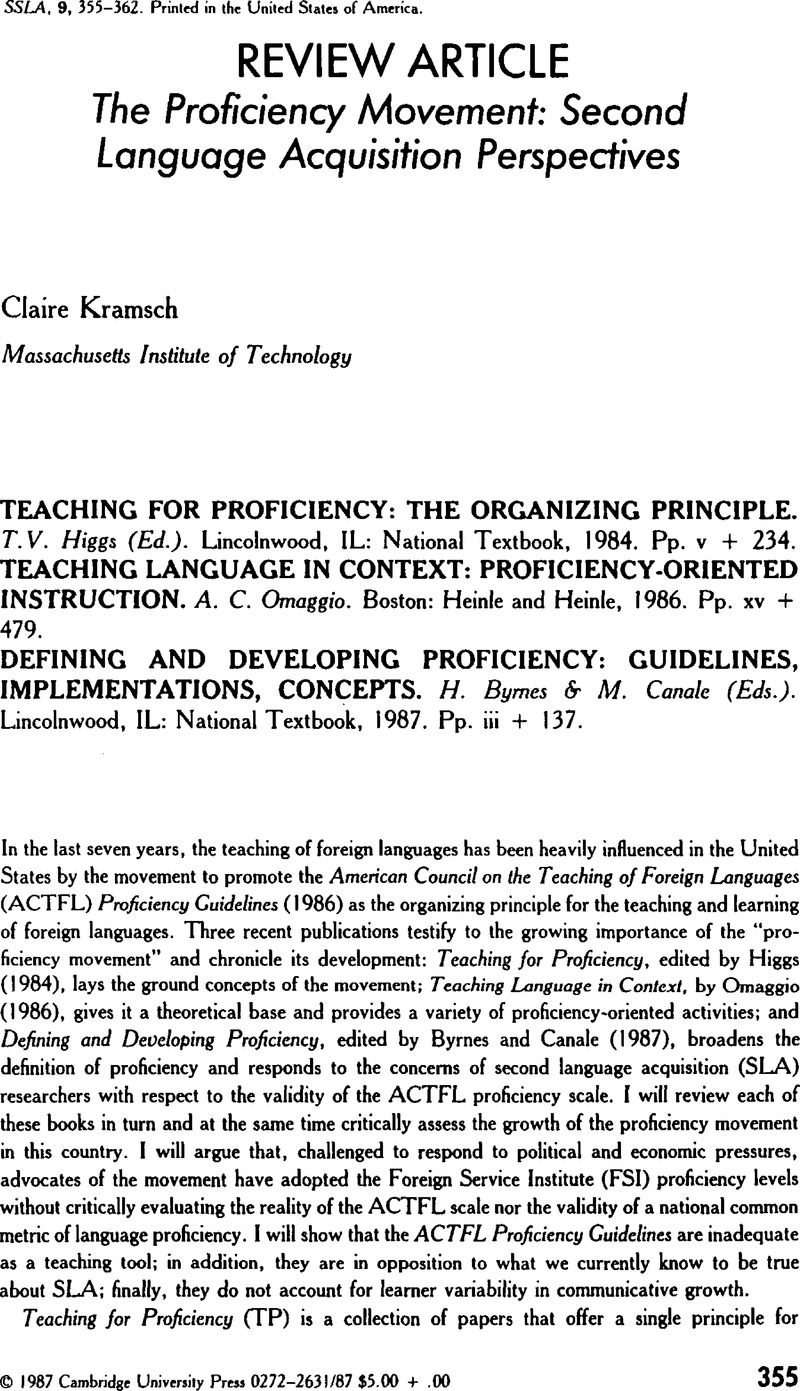Crossref Citations
This article has been cited by the following publications. This list is generated based on data provided by Crossref.
Freed, Barbara F.
1988.
Foreign Language Proficiency in the Classroom and Beyond. Charles J. James (Ed.). Lincolnwood, IL: National Textbook, 1985. Pp. v + 179..
Studies in Second Language Acquisition,
Vol. 10,
Issue. 2,
p.
269.
SWAFFAR, JANET K.
1989.
Competing Paradigms in Adult Language Acquisition.
The Modern Language Journal,
Vol. 73,
Issue. 3,
p.
301.
Kramsch, Claire
1994.
TEACHING LANGUAGE IN CONTEXT. Alice Omaggio Hadley Boston: Heinle and Heinle, 1993. Pp. xi + 532..
Studies in Second Language Acquisition,
Vol. 16,
Issue. 3,
p.
358.
TSCHIRNER, ERWIN
1996.
Scope and Sequence: Rethinking Beginning Foreign Language Instruction.
The Modern Language Journal,
Vol. 80,
Issue. 1,
p.
1.
Salaberry, Rafael
2000.
Revising the revised format of the ACTFL Oral Proficiency Interview.
Language Testing,
Vol. 17,
Issue. 3,
p.
289.
Liskin‐Gasparro, Judith E.
2003.
The ACTFL Proficiency Guidelines and the Oral Proficiency Interview: A Brief History and Analysis of Their Survival.
Foreign Language Annals,
Vol. 36,
Issue. 4,
p.
483.
Swaffar, Janet
2014.
Transforming Postsecondary Foreign Language Teaching in the United States.
Vol. 21,
Issue. ,
p.
19.
East, Martin
2016.
Assessing Foreign Language Students’ Spoken Proficiency.
Vol. 26,
Issue. ,
p.
1.
East, Martin
Tolosa, Constanza
Howard, Jocelyn
Biebricher, Christine
and
Scott, Adèle
2022.
Journeys Towards Intercultural Capability in Language Classrooms.
p.
1.



